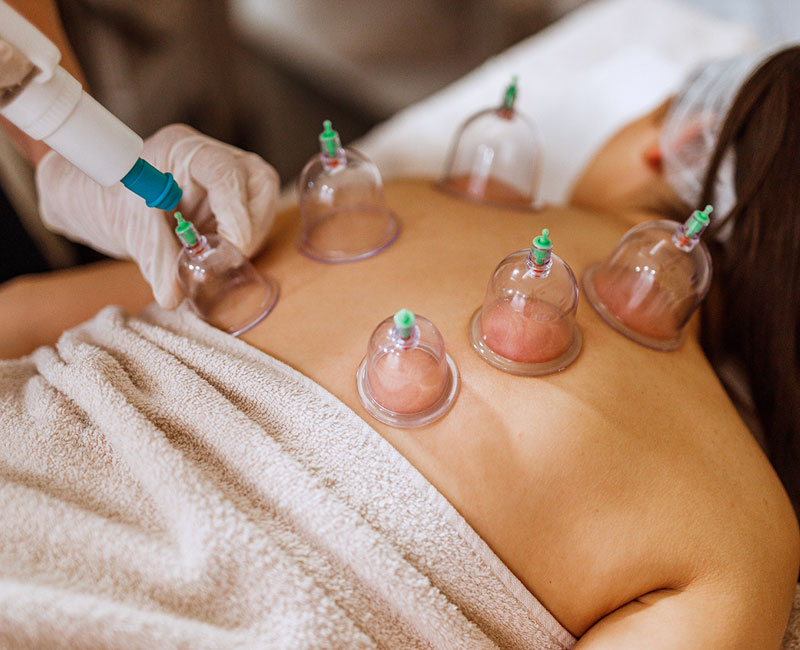Image source: Google
Cupping therapy has gained popularity in recent years as a natural alternative treatment for various health issues. While it has been used for centuries in traditional medicine, many people are now turning to cupping therapy to alleviate pain, reduce inflammation, improve blood flow, and promote relaxation. But what exactly is cupping therapy, and how does it work? Let's delve into the science behind this ancient practice to understand its potential benefits and applications.
The Basics of Cupping Therapy
Cupping therapy is a technique that involves placing cups on the skin to create suction. These cups can be made of glass, bamboo, or silicone, and they come in various sizes. The suction created by the cups draws the skin and underlying tissue into the cup, which is believed to promote healing by increasing blood flow, reducing inflammation, and releasing tension in the muscles.
Types of Cupping Therapy
- Dry Cupping: In dry cupping, a flammable substance such as alcohol is placed in the cup and set on fire to create a vacuum before placing it on the skin.
- Wet Cupping: Wet cupping involves making small incisions on the skin before applying the cup to draw out blood or other fluids.
- Fire Cupping: Fire cupping uses a cotton ball soaked in alcohol, which is set on fire inside the cup to create suction before placing it on the skin.
How Cupping Therapy Works
The suction created by cupping therapy has several effects on the body, including:
Increased Blood Flow
- The suction from the cups dilates the blood vessels, allowing more blood to flow to the affected area.
- Improved blood circulation can help deliver oxygen and nutrients to the tissues, promoting healing and reducing pain.
Reduced Inflammation
- Cupping therapy is believed to help reduce inflammation by promoting the flow of lymphatic fluid, which carries away toxins and waste products from the tissues.
- Reducing inflammation can help alleviate pain and stiffness in the muscles and joints.
Relaxation of Muscles
- The suction created by the cups can help loosen tight muscles and release tension, promoting relaxation and reducing stress.
- Cupping therapy is often used to treat muscle pain, stiffness, and soreness caused by physical activity or stress.
Potential Benefits of Cupping Therapy
While more research is needed to fully understand the effects of cupping therapy, some potential benefits include:
- Pain relief: Cupping therapy is commonly used to alleviate musculoskeletal pain, such as back pain, neck pain, and shoulder pain.
- Improved circulation: By increasing blood flow to the tissues, cupping therapy may help improve overall circulation and promote healing.
- Relaxation and stress relief: The gentle suction of cupping therapy can promote relaxation and reduce stress and anxiety.
- Detoxification: Wet cupping is believed to help detoxify the body by drawing out impurities and toxins through the skin.
Is Cupping Therapy Safe?
While cupping therapy is generally considered safe when performed by a trained practitioner, it can cause some side effects, including:
Skin Irritation
- Leaving the cups on the skin for too long or applying too much suction can cause skin irritation, bruising, or blisters.
- It is essential to follow the recommendations of a qualified practitioner to minimize the risk of skin damage.
Dizziness or Lightheadedness
- Some people may experience dizziness or lightheadedness during or after cupping therapy due to changes in blood flow and circulation.
- It is important to inform your practitioner if you experience any discomfort during the treatment.
Infection
- If proper hygiene is not maintained during the cupping therapy session, there is a risk of infection from the incisions made for wet cupping.
- Make sure your practitioner follows strict hygiene practices to reduce the risk of infection.
Conclusion
Cupping therapy is a traditional practice that has been used for centuries to promote healing and wellness. While the science behind cupping therapy is still being studied, many people find relief from pain, inflammation, and stress through this natural treatment. If you are considering trying cupping therapy, make sure to consult with a qualified practitioner to discuss the potential benefits and risks based on your individual health needs.

